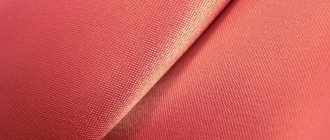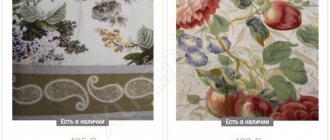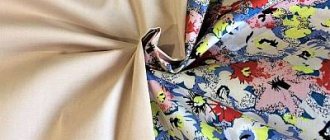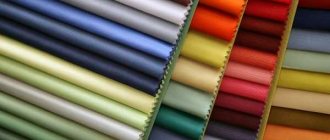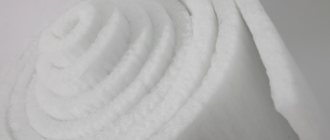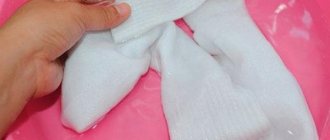Home / By weaving type
Back
Published: 12/03/2020
Reading time: 4 min
1
207
Satin fabric has a noble shine and incredible strength. Made primarily from cotton. Due to the natural origin of the fibers, the material is not much inferior to natural silk, and in terms of performance characteristics it surpasses traditional fabrics.
- 1 Appearance and characteristics
- 2 Production features
- 3 Classification 3.1 By composition
- 3.2 By method of drawing
- 3.3 By purpose
Appearance and characteristics
The history of satin is lost in the mists of time, but it is known that already in the medieval Middle Kingdom weavers created dense fabric with a characteristic shine. The secret of its production, like silk, remained unsolved for a long time.
Satin came to Europe in the 12th century, thanks to Arab merchants. They also gave the material a name. The fact is that textiles were mainly exported from the Chinese city of Quanzhou, which sounds like Zaytun in Arabic. In France, the name was finally transformed into satin, surviving to this day.
The fabric was originally made from silk, so it was extremely expensive. Attempts to make satin cheaper were crowned with success when some of the fibers began to be replaced with cotton, and then with artificial and synthetic threads. The appearance has remained virtually unchanged, but strength and durability have increased.
Satin fabric has a smooth, silky surface on the front side and a slightly rough back. It has a characteristic soft shine, thanks to thin and tightly twisted weft threads, as well as the weaving technique of the same name.
Satin - what kind of fabric is it?
The origin of the name “satin” is associated with Zaitun (modern Quanzhou) - the name of a large port in Southeast China. From there, starting from the 12th century, Arab merchants imported expensive silk fabric of special weave, which was distinguished by its strength and shine. In many European languages, the word satin is still used to describe silk satin.
Satin fabric owes its special qualities to a special type of weave. It is called “satin” and consists in the fact that when the weft thread passes, it overlaps four warp threads on the front side and one on the back, shifting by one thread with each new step. In this case, a covering of weft threads is formed on the front side, and a matte base remains on the back side. The density of satin, depending on its type, can range from 90 to 170 g/sq.m. At the same time, the warp thread is often thicker and of lower quality than the weft.
At the beginning of the 19th century in Europe, this fabric began to be made, first on a cotton basis, and then entirely from this fiber. Satin cotton material is widely used because it has such excellent properties as:
- high strength and wear resistance due to the high density of the weave of the woven fabric;
- softness and pleasant tactile sensations;
- elegant shine;
- "breathing" abilities;
- good hygroscopicity;
- naturalness;
- ability to retain heat;
- ability to hold shape and drape;
- crease resistance;
- affordable price.
As for the disadvantages, satin fabric, including premium satin, tends to crumble heavily when cut. In addition, due to the high density of this material, it may be too hot for the warm season. It should also be noted that such characteristics as naturalness and the associated hygroscopicity and breathability are inherent only in materials that contain 100% cotton. Modern satin materials often contain synthetics.
Production Features
Many enterprises around the world are engaged in the production of satin. In addition to the Russian Federation, it is produced in China, Italy, Pakistan, and India. A significant part of the market is occupied by Turkish satin, from which luxury bed and table linens are made. However, there is no fundamental difference in the production process; the technologies are approximately the same for everyone.
The raw material for natural fabric is cotton: regular or mercerized. The process involves treating natural fiber with a solution of sodium hydroxide. Under the influence of alkali, the structure of cellulose changes, acquiring the properties of viscose: the fiber becomes voluminous, the pile is smoothed.
The yarn gains shine, strength and tear resistance increases. The treated fibers are then woven into cloth, which is then bleached and dyed. Satin with mercerized fibers responds better to pigments.
Another feature of textiles is satin weave, which is made with at least 5 threads: 4 weft threads covering 1 warp fiber. In each subsequent row, the rapport shifts by 1-2 steps, forming a kind of pattern. The front surface is smooth and shimmering due to the thin, tightly twisted threads, while the back surface is more matte, reminiscent of flannel.
Classification
Today there is a wide variety of satins. All of them can be classified according to several criteria.
By composition
If previously the material was made exclusively from silk or cotton, now many other fabrics have appeared.
| Name | Compound |
| Regular satin | 100% cotton |
| Double-satin | Cotton with viscose added |
| Crepe satin | Natural/rayon silk with viscose or polyester |
| Mako-satin | 100% high quality long staple Egyptian cotton |
| Microsatin | 1 option: cotton + polyester; Option 2: 100% polyester |
| Novosatin | 100% synthetic |
| Satin-satin | Cotton combined with silk fibers |
| Satin blend | Cotton with synthetics (usually with polyester) |
| Satin Deluxe | Completely natural composition, high-density fabric – 120 g/m2 (regular satin – 86 g/m2) |
| Software | Insulated satin made of microfibers treated with impregnation creating a flannel effect |
| Polysatin | Cotton with polyester or 100% synthetic |
| Silk-satin | Silk on the front side, cotton on the back |
| Staple satin | Cotton with lavsan |
According to the method of drawing
In the manufacture of fabrics, different dyeing techniques are used, thanks to which today there is a huge selection of satins.
They can be divided into several main groups:
Author:
Anastasia Kukushkina
I hope you enjoy the article I have prepared for you! If you find errors in it, write to me about it! I will answer any questions you have, ask them!
